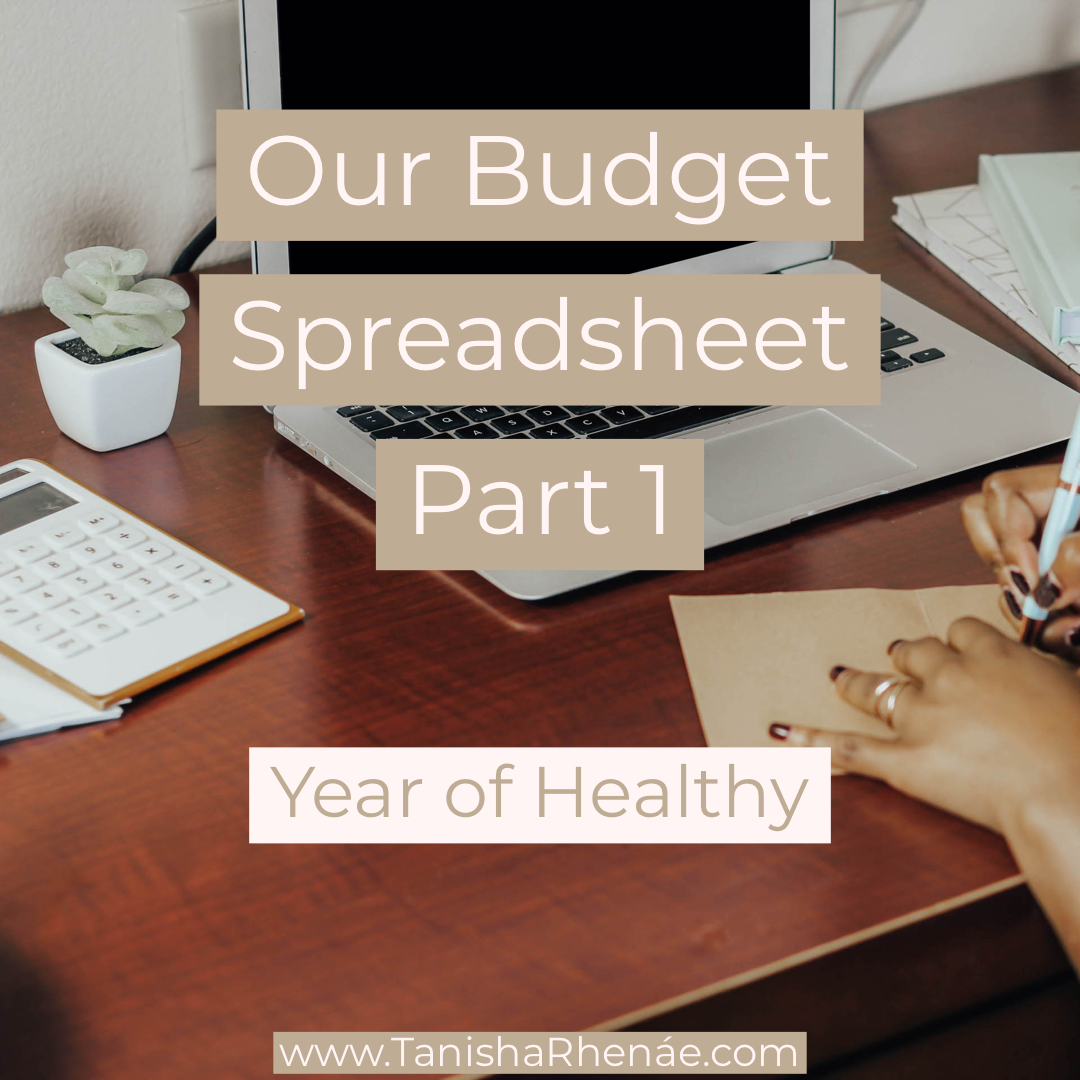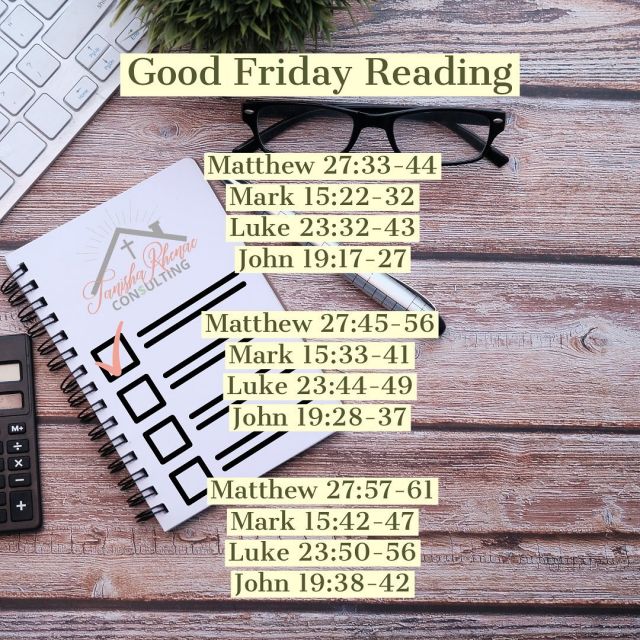
If you have read any of the Year of Healthy posts from January, you learned that I have a love for budgeting. You also learned that after taking a break from handling our household budget, I decided to break out a spreadsheet that helped us previously and update it a bit. I wanted to share with you what our monthly budget spreadsheet looks like. To get some more background information check out the previous posts here and here.
All In One Place
While this post will talk about our monthly budget, I do want to touch on what else is in this excel document. I am a firm believer in having all you need in one place for almost every area of my life. That is probably why I have a lint roller in the living room, laundry room, bedroom, bathroom, and the closet. It just doesn’t make sense to me to have to go hunting for things. So when it was time to update our budget spreadsheet, I knew I wanted it to include all things financial for us. I may do a post later showing the specifics of what else is included but for now, here is a quick list:
- PayDay Calendar
- Mortgage Tracking (Statement Info, Date Pymts Posted, Escrow Details, Principal Balance, Interest Paid Balance, Estimated Equity)
- Financial Goals (Monthly, Yearly, Lifetime)
- Bank Transactions
- Yearly Budget (until 2021)
Monthly Template
One thing I did while putting together the spreadsheet was to create a new tab for each month. That way, when things come up that are in the future, I can already have a spot designated for it. For example, if we decide to take a trip in May, I can increase our blow money for that month during my planning in January. Each month already has my budget template, and I only need to update it if I make significant changes.
On the left side of the template is the actual budget. I have our income and expenses sectioned off in groups because it makes it so much easier to see where our money is going. I have a column labeled Budgeted, and that is where I do my preplanning for what we expect to receive income-wise and spend expense wise. The next column is Actual 1-15. Any money actually received or spent will get documented under this column for the first half of the month. The second half of the month is recorded under the column Actual 16-31. The final two columns are Diff/Remaining, which I have set as a formula to let me know where we either overspent or underspent by subtracting our Actual from our Budgeted and lastly, a Notes column.
On the right side, is my trackers. Each major group has one, so I can keep track of the totals and sometimes compare it to our goals. Some of our sections, like gas, needs to be tracked in more detail than just saying we will spend $250 this month. We can see which car is using more gas, etc. This side also has our Debt Snowball information, our bill tracker with specifics such as due dates, how it was paid, and if it has cleared yet.
Let’s jump into the different sections and trackers. *By the way, I include blank shots of our template. I’m just not there yet with showing specific numbers on the intranets. I hope you feel me!*
Income

This section in our budget is pretty self-explanatory. Any income that comes into our household gets documented here. That could be traditional employment, business income, rental/investment income, side hustle income, gifts. It all goes into our income section. Since it is just Chris and me, we have it noted as His Salary and Her Salary and then a couple of spots for Extra Income. For this section and every section, we have a formula for the subtotal and also for the Diff/Remaining column.

On the right side, we do have a Paycheck Tracker. Although it probably should be titled, Income Tracker. But this is where I track the details of our income. Specifically, the date received and what type it was. If you expect to get rental income every month on the first, under Extra Income #1, you will document 1/1/20 with a Target amount of $1,000. If that is what you actually get, you record the Actual amount to $1,000. This is extremely helpful for those who don’t have a consistent income amount. We expect our paycheck to be a certain amount every month, but different variables could have us receiving more. I only want to budget off of what I know we will receive. Anything extra is an added benefit that I can distribute out once that money is in my hands.
Giving

Our next section is giving. I am a Christian, and I believe in tithing. For me, tithing is done before paying anything else as I am a firm believer in God being able to make the rest stretch as long as I give Him my first fruits. I actually already have the formula set up in that field based on our total income. Right now, it is documented as 10% Tithe, but I believe that one day we will be able to do more. This section is also where I include our Offerings amount and extra spaces for monetary Donations that we make during the month to charities or those in need.

My YTD Giving Tracker helps me track our giving towards our specific goals. Under Target, I list out our goal (for example, 10% of our annual income would be our 10% Tithe target), and each month, I would update the Actual amount. I have a formula set up for Percent Given. This allows me to make sure we are on track each month. If I get to, let’s say, July, and for some reason, we are under 50% of our goal, it is time to reevaluate or confirm that the rest of the year has us hitting our goal.
Saving

I also believe in paying yourself first before you pay anybody else. I’ve seen (and done) too often, people who wait until everything is paid before they put any money in savings and then they are left with nothing. This doesn’t work for us because we have goals that we are trying to hit. In the past, we have followed Dave Ramsey, and he says that you should start with saving an Emergency Fund of $1,000 before you start paying off debt. That is more of a short term goal that we may already have accomplished. But if we ever have to use the fund, we need to focus on building it again. And that is why it keeps a permanent spot on our budget. We then have a place for Retirement. The older we get, the more critical this section is. As a No Car Note family, we need to keep that going for as long as possible. That means we need to save for our next set of cars, which happens in the New Car Fund. Our next one is a calculation. Have you ever heard the statistic that, if you pay one additional payment a year to the principal on a 30-year mortgage, it will remove seven years from your mortgage? That’s seven years of interest I do not have to pay! So we take that one extra payment and divide it by 12 to know how much extra we have to put aside each month in our House Fund. We would also use this when it comes time to save for a new house. For additional money that we want to save for no specific purpose, we have a Savings Goal section. This is also a formula that can calculate 5%, 10%, or 25% of your total income. If you are in school and paying for it out of pocket (like I was), there is a Tuition section. Many financial gurus will tell you about the benefit of having a certain amount of your monthly expenses set aside in case of job loss. Depending on who you follow, that amount could be anywhere from 3-12 months. I prefer to save in 3-month increments for our goal. So we currently have it set as 3-6 Months Expenses. Finally, we have our Vacation Fund to save for those vacation dreams we have.

I threw in some sample numbers so you could see what the YTD Savings Tracker looks like in action with the goals listed. Target is where we keep our goal numbers for each section. Each month, as deposits are made into these funds, the Actual amount gets updated. Then the formula I have under Percent Saved will calculate and let us know how on track with our goals we are. Admittedly, some of these goals have to take a back burner depending on whats going on in our life. Some gurus will tell you only to have an emergency fund while paying debt. Other’s will show you how to save in all these areas AND pay off debt, albeit slowly.
Debt

Although this tends to be a substantial section, the numbers are pretty straightforward. The Debt section is where I list our budgeted and actual payments for our Mortgage, Credit Cards, Car Notes, Student Loans, and any Other Debt you have. (I’ve added Student Loans up here because I know that is a large amount of the debt those in America carry. We were lucky to pay mine off before we bought our house and cash flow, my classes, when I take them). The Budgeted section here will show the minimum payment amount only. Once we make the payment (which hopefully is always more than the minimum), we update the Actual section.

The Debt Snowball Tracker is for me one of my favorite parts on this spreadsheet. But it can also be the most shocking if you haven’t taken stock of your financial situation before. This is another section where I have added sample numbers for you to see. The Debt Snowball is where we track the overall totals of our debt. I include the Due Date since those are typically fixed. Then I add in the Original amount for the debt. Each month, I update the Balance. And the formula calculates the Percent Paid. I document the Interest Rate to keep an eye on those. And I update the Per Statement Date to show where I got the balance from. Plugging in all of those numbers will then have the formula calculate the Total Current Debt and the Debt Starting Point. Then I have a section for the Total Debt Paid Off, which gives me the dollar amount that we have already paid off and the percentage.

The Bill Tracker is the biggest section on the right side of the spreadsheet, but I am going to break it up. This section here is where I track the payment information for the debt that we have. I document the exact Due Date, the exact Amount, the Method of payment (mail check, scheduled, autopay), which Paycheck it will come out of, and if it’s Confirmed Paid/Payment Cleared. Then I also have a Notes section here. While the Debt Snowball Tracker shows the total amount of debt we have, the Debt section of our Budget shows the minimum payment due, and what we plan to pay, the Debt section of our Bill Tracker focuses on the monthly payments that we actually make.
Next Time
Next week, I will go into details about our other bills, subscriptions, blow money, and savings categories for some of those areas. Let me know below if you have a budget spreadsheet or what you think of ours!









